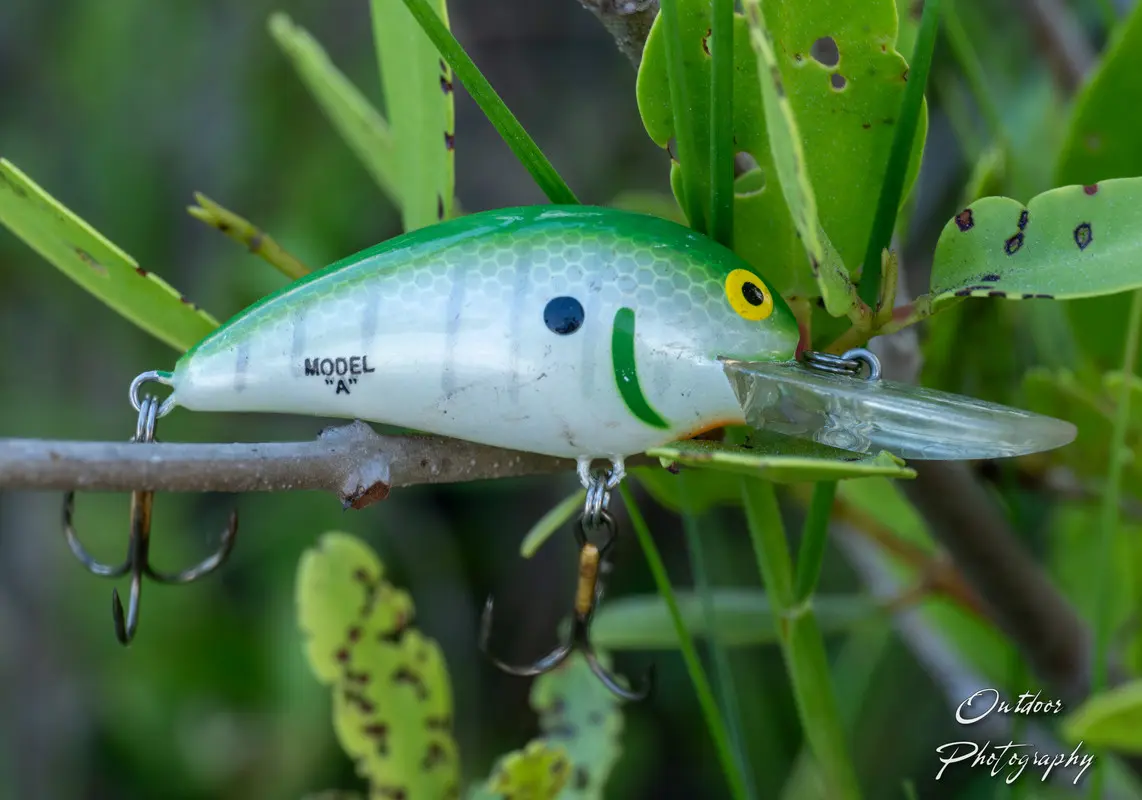Tackle: Lure - Crankbaits (Shallow Diving)

The Ultimate Guide to Fishing Shallow Diving Crankbaits
Shallow diving crankbaits are among the most versatile and effective lures for targeting bass and other freshwater gamefish in shallow waters. Designed to run just below the surface—usually between 1 to 6 feet deep—these lures mimic fleeing baitfish and provoke aggressive strikes from fish holding near cover, structure, or shallow flats. Whether you're a beginner or an experienced angler, understanding how to rig, fish, and choose the right shallow diving crankbait can make a huge difference in your success on the water.
What Makes Shallow Diving Crankbaits Special?
Shallow divers are generally built to cover water quickly and tempt fish in areas where heavier, deeper lures can’t be fished without snagging. Their smaller, shorter bills allow them to run just beneath the surface, ideal for fishing around docks, submerged vegetation, rocks, and shallow flats, or creeks where bass often hunt.
Rod Length and Action for Shallow Diving Crankbaits
When fishing shallow diving crankbaits, the choice of rod length and action significantly impacts your lure control and hook-setting power. A rod typically in the7' range is ideal. This length provides a good balance between casting distance, accuracy, and control. Moderate to moderate-fast action rods work best. A moderate-fast action rod allows enough tip flex to absorb the sudden shocks when a bass strikes but still has enough backbone to set the hook firmly, especially important with shallow crankbaits that often produce fast strikes near structure.
Reel Speed for Shallow Diving Crankbaits
The reel gear ratio impacts how fast you retrieve the lure and how it behaves underwater:
-
Gear Ratio: A reel with a 6.3:1 to 7.1:1 gear ratio is recommended. This range offers a comfortable retrieve speed that lets you maintain consistent lure action without forcing you to crank too quickly or too slowly.
-
With shallow divers, a steady, moderate retrieve is key to imitating fleeing baitfish. A reel that operates smoothly at these speeds allows for effortless, controlled retrieves, giving you more time to react to strikes.
Line Choice for Shallow Diving Crankbaits
Line selection depends on water clarity, cover, and the size of fish targeted, but here are general guidelines:
- Fluorocarbon Line: Offers better abrasion resistance and lower visibility in clear water. A 10-15 lb test fluorocarbon line is effective, especially around rocky or woody cover.
Snap or Lure Clip Considerations
Many anglers prefer using snaps or lure clips for quick lure changes. However, when fishing shallow diving crankbaits, it’s crucial to remove the split ring from the lure’s attachment point if you’re using a snap. This is because:
- The split ring adds an extra link that can cause the lure to run untrue or reduce its action.
Three Ideal Scenarios to Use Shallow Diving Crankbaits
1. Fishing Around Submerged Vegetation or Shallow Weeds
Shallow divers excel at working over weed edges and submerged aquatic plants. Bass often position near these areas for ambushing prey. The shallow diving crankbait’s ability to run just above or through the top of vegetation without snagging makes it an excellent choice to provoke strikes.
2. Covering Shallow Flats and Rock Piles
During early spring or fall, bass move onto shallow flats and rocky structures to feed aggressively. Casting shallow divers across these areas helps cover water efficiently, triggering reaction strikes from fish holding tight to the bottom structure or shallow rocks.
3. Fishing Near Docks and Shoreline Structures
Shallow divers are perfect for fishing around docks, fallen trees, and shoreline structure where fish lurk in shallow water. Their shallow running depth allows you to get close to structure without snagging while triggering bass that patrol these ambush points.
Chart: Common Brand Name Shallow Diving Crankbaits
| Brand & Model | Length (inches) | Weight (oz) | Diving Depth (ft) | Notes |
|---|---|---|---|---|
| Bomber Gen 2 Model 4A Crankbait | 2 1/8 | 5/16 | 3 - 6 | Single rattle, tight wobble |
| Strike King KVD 1.5 | 1.5 | 1/4 | 2 - 4 | Compact, tight wobble, great for finesse |
| Duel Hardcore Crankbait 2+ | 2 5/8 | 1/2 | 2 - 7 | Tungsten wieght transfer system, round profile |
| Googan Squad Recon Crankbait | 2 | 1/4 | 3 - 6 | Super compact, wide wobble, great for dirty water |
| Rapala Shallow Shad Rap 5 Crankbait | 2 | 3/16 | 3 - 6 | Balsa construction, wounded baitfish wobble |
The World's Most Complete Fishing Resource
We're building the ultimate fishing encyclopedia—created by anglers, for anglers. Our articles are created by real experienced fishermen, sometimes using AI-powered research. This helps us try to cover every species, technique, and fishing spot imaginable. While we strive for accuracy, fishing conditions and regulations can change, and some details may become outdated or contain unintentional inaccuracies. AI can sometimes make mistakes with specific details like local access points, parking areas, species distributions, or record sizes.
Spot something off? Whether it's an incorrect boat ramp location, wrong species information, outdated regulations, or any other error, please use the "Help Us Improve This Page" section below. Your local knowledge makes this resource better for every angler.
Explore Related Topics
Discover more articles to deepen your knowledge
Curating articles for you...
Create your own Research Page using AI
Try our AI assistant for free—sign up to access this powerful feature